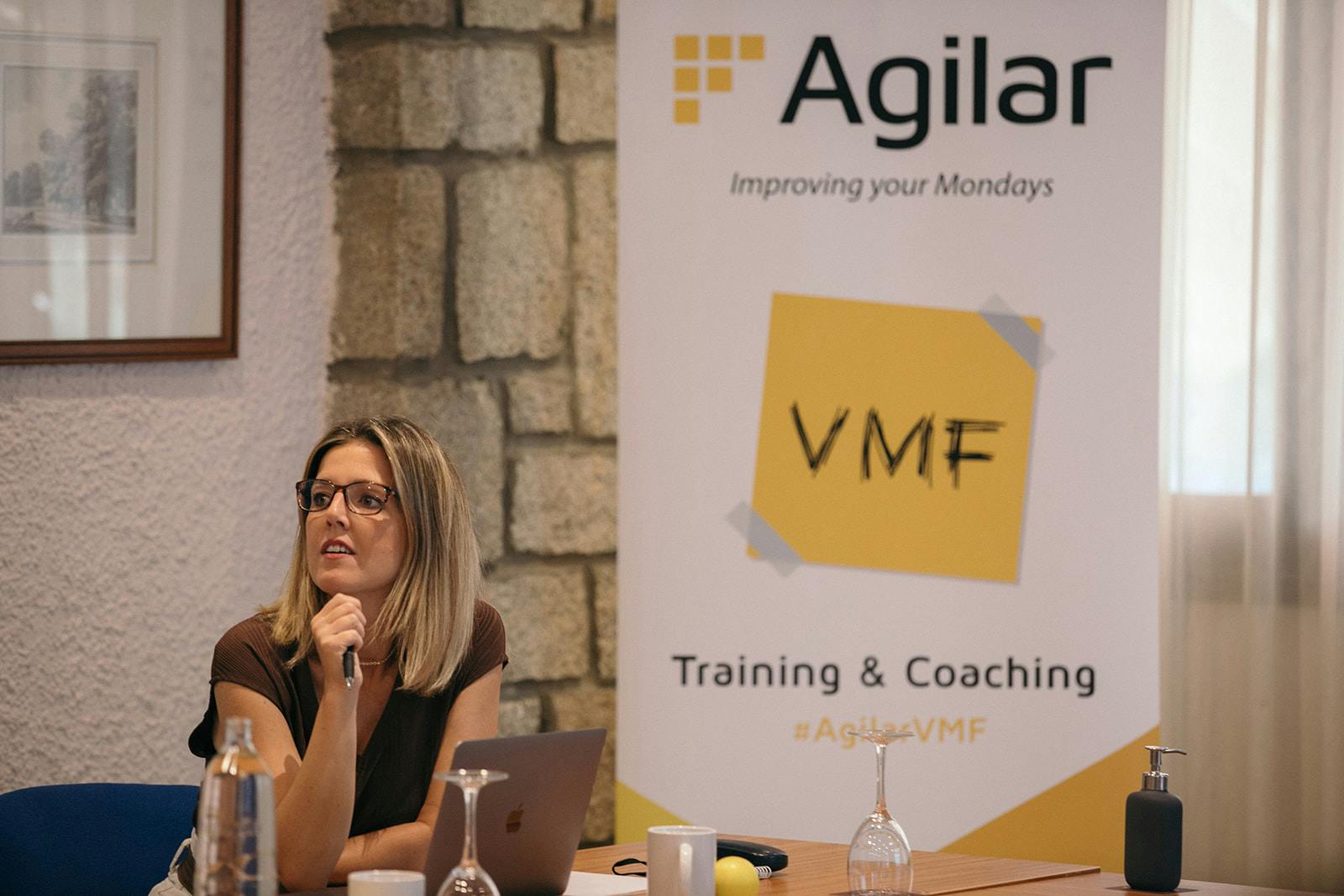What really happens in a Certified Scrum Master course

Tiago Garcez
29 Sep, 2025
scrum mastery
scrum mastery

A few months ago, we were wrapping up day one of a Certified Scrum Master course at Agilar when a participant — a product manager in a tech company — asked me something interesting:
“I get the roles, the events, the artifacts… we have those in place already. But it hasn’t really changed much and now people complain they have to spend too much time in meetings. Why isn’t it working for us?”
That question (which I hear often) captures the essence of why I think these trainings are valuable. It gives people a chance to understand Scrum (day 1), and provides an opportunity to dive deeper into how to put into practice in your context (day 2). It opens the door for people to reflect on what still needs to change in their teams and organization, and ideas on what could be the next step.
What a CSM course looks like
When people sign up, they expect a lot of things. Some think it will be two days of slides. Others expect a thorough examination of the Scrum Guide. A few even come ready to challenge everything they’ve heard about Agile.
From my side of the room, the experience looks very different.
- It’s not a lecture. I rarely stand and “deliver content.” Instead, I’m constantly inviting participants to practice, to debate, to put themselves in the shoes of a Scrum Master.
- Every group is unique. A room full of software engineers will take us in a very different direction than a group of HR professionals or marketing teams. My job is to adapt, connecting Scrum’s principles to their world.
- The course is alive. We use simulations, team exercises, and case studies drawn from real transformations we’ve led. Theory is important — but it comes alive only when people wrestle with it in practice.
By the end of day one, there’s usually a shared realization: Agile is not just a process to follow, it’s a mindset that challenges how we collaborate, decide, and deliver.
What we cover and what people discover
The outline looks neat on paper:
- Agile values and principles.
- Scrum framework (roles, events, artifacts).
- The Scrum Master’s responsibilities.
- Practical tools like visual management, facilitation, and dealing with conflict.
- Common pitfalls and how to overcome them.
But from the trainer’s perspective, the insights come not from the curriculum, but rather from the discussions and collaborative exercises.
- Roles are about relationships. Participants come in asking, “What exactly does a Scrum Master do?” They leave understanding that it’s less about enforcing rules and more about shaping culture, building trust, and enabling others to succeed.
- Events are not just meetings. Daily Scrums, Sprint Reviews, Retrospectives — these are not ceremonies to tick off a list, but if well facilitated a valuable opportunity to inspect and adapt collaboratively.
- Artifacts are conversations. A Product Backlog or Sprint Backlog is only useful if it triggers the right conversations. It’s less about documentation, more about alignment.
The real challenges participants bring
Behind every group exercise, there are real stories. Someone’s struggling with a leader who wants all the answers. Another is trying to coach a team that resists retrospectives. A third is balancing Scrum with strict corporate governance.
I don’t shy away from these. In fact, they are the heart of the course. We pause, we unpack the issue, and we explore how a Scrum Master can respond. These conversations often bring the richest insights, because they show how Scrum can be at odds with the current organizational culture and processes — and how to create a space for real change.
Why this training matters
From my point of view, the CSM course is less about “teaching Scrum” and more about creating courage and clarity. Courage to imagine making changes to the way your team works. Clarity about what Scrum really is — and isn’t.
Participants leave with:
- Confidence to facilitate Scrum events with purpose, not just by the book.
- Tools to foster transparency, collaboration, and continuous improvement.
- A deeper sense that agility is about people, not just process.
- A community — they realize they’re not alone in facing these challenges.
And yes, they leave with the official Scrum Alliance Certified ScrumMaster® credential, which opens doors. But more importantly, they leave ready to shift conversations, to experiment, to help their teams work better together.
Beyond the classroom
When I think back to that product manager’s question — “why isn’t Agile working for us?” — I think that’s the question every good Scrum Master should be asking. And the answer isn’t found in the flipcharts or the exam. It’s found in how you show up the next day, how you listen, how you challenge, how you support your team.
The training should give you more confidence to explore the root causes of the challenges you’re facing today with your teams, and to define changes you could do to address them.